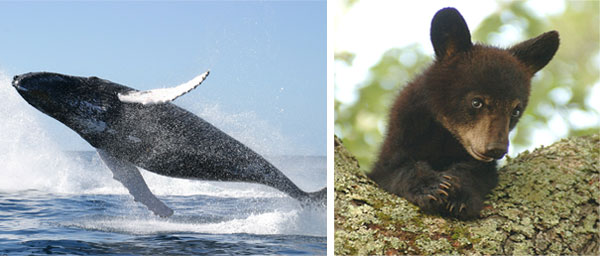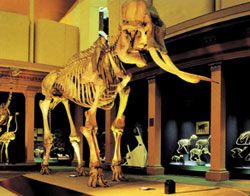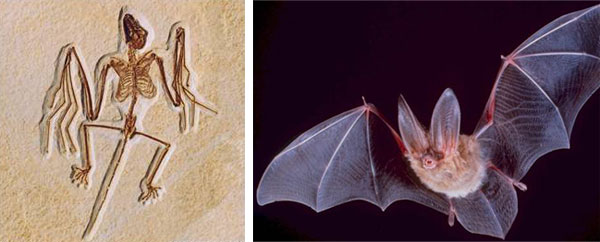The Origin of Mammals
Contrary to evolutionist claims, mammals emerged on Earth suddenly without any predecessors. Moreover, evolutionists have no explanation for the origin of distinct mammal groups.
As so far examined, the theory of evolution proposes that some imaginary creatures that came out of the sea transformed themselves into reptiles and that birds were formed by the evolution as that of reptiles. According to the same scenario, reptiles are the ancestors not only of birds but also of mammals. However, on the one hand, there are big, structural gaps between reptiles, which have scales on their bodies, which are cold-blooded, and which reproduce by laying eggs, and on the other, mammals, which have fur on their bodies, which are warm-blooded, and which reproduce by giving birth to live offspring.
 |
SEA MAMMALS AND BEARS Sea mammals, such as dolphins and whales, are the primary animals that put evolutionists into a quandary. According to evolution, these animals ought to have evolved from land mammals, but there is no land animal that can be considered the "ancestor" of these species. In his book The Origin of Species, Darwin asserted that "whales had evolved from bears that tried to swim." Later, however, he realized the unreasonableness of this claim and omitted this subject from the latest edition of his book. |
An example of the structural barriers between reptiles and mammals is their jaw structure. Mammals' mandibles consist of only one mandibular bone and the teeth are placed on this bone. In reptiles, however, there are three little bones on both sides of the mandible.
 |
THE FOSSIL EVIDENCE There is no difference between mammal fossils dozens of millions of years old and the mammals living today. Furthermore, these fossils emerge suddenly, with no connection to any species that had gone before. |
 |
THE PROBLEM OF FURS The bodies of mammals are covered by furs or hairs, which is a characteristic that is not found in any other living group. The bodies of reptiles, the alleged ancestors of mammals, however, are covered with scales. Evolutionists prefer to keep silent in response to the question of how scales have been transformed into mammal furs. |
Another basic difference is that all mammals have three bones in their middle ear (hammer, anvil, and stirrup). In all reptiles, there is a single bone in the middle ear. Evolutionists claim that the reptile jaw and reptile middle ear evolved gradually into the mammal jaw and ear. Yet the question of how this change occurred remains unanswered. In particular, the question of how an ear with a single bone evolved into an ear with three bones and how the process of hearing kept on functioning in the meanwhile can never be explained.
Not surprisingly, not a single fossil to link reptiles and mammals is to be found. This is why evolutionist paleontologist Roger Lewin was forced to say that "the transition to the first mammal... is still an enigma".43
George Gaylord Simpson, one of the biggest evolutionary authorities in the 20th century makes the following comment on this fact that is quite perplexing for evolutionists:
The most puzzling event in the history of life on earth is the change from the Mesozoic, the Age of Reptile, to the Age of Mammals. It is as if the curtain were rung down suddenly on the stage where all the leading roles were taken by reptiles, especially dinosaurs, in great numbers and bewildering variety, and rose again immediately to reveal the same setting but an entirely new cast, a cast in which the dinosaurs do not appear at all, other reptiles are supernumeraries, and all the leading parts are played by mammals of sorts barely hinted at in the preceding acts.44
All of these demonstrate that mammals also appeared on Earth suddenly and fully formed, without any ancestors. This is concrete evidence of the fact that they were created by God.
 |
BATS AND THE SONAR SYTEM Bats, the only flying mammal species, are one of the organisms that challenge evolution. Evolutionists assert that bats evolved step by step, but they have no consistent answer about the origin of their wings. Moreover, bat fossils aged 50 million years demonstrate that these animals came into being in their present state. Moreover, bats have a very sensitive sonar system. With their large ears, they sense and analyze the echo of the high-pitched sounds they emit. The emergence of such a complex system cannot be attributed to chance. |
Footnotes
43)Roger Lewin, "Bones of Mammals, Ancestors Fleshed Out", Science, Band 212, 26 June 1981, S. 1492.
44) Gaylord Simpson, Life Before Man, New York: Time-Life Books, 1972, S. 42.
- An Outdated View: The Theory of Evolution
- The Origin of Life
- The Design in the Protein
- The Design in the Cell
- Genetic Information
- The Design in Nature
- Miller's Experiment
- The Natural Selection Misconception
- Mutations
- Irreducible Complexity
- Impasse of Intermediate Forms
- The Cambrian Period
- Fish and Amphibians
- Coelacanth Misconception
- Reptiles
- Birds and Reptiles
- Archaeopteryx Misconception
- Bird Feathers
- The Origin of Mammals
- Living Fossils
- The Tale of Man's Evolution
- Australopithecus
- Homo Erectus
- A Lost Human Race: Neanderthals
- The Collapse of the Family Tree
- The Bipedalism Impasse
- False Faces
- Piltdown Scandal
- Why is Evolution Defended?
- The Obvious Truth: Creation
